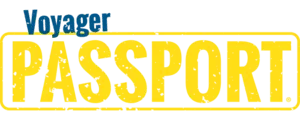Unleashing Creativity: Crafting Compelling Story Maps in Education

Story maps promote creativity, foster critical thinking, and encourage teamwork. Adaptable for various subjects and learners, these maps help students connect concepts with narrative structure, improving comprehension and information retention. Their effectiveness can be evaluated and integrated into the curriculum, making story maps a powerful boost for literacy and academic performance.
Storytelling has been an integral part of human culture for centuries. Storytelling captivates our imagination, helps us make sense of the world, and allows us to share experiences and ideas. For educators, storytelling serves as a powerful tool to engage students and enhance their learning experiences. One effective technique that educators can employ is the use of story maps.
Storyteller, author, and educator Antonio Sacre said in his recent blog post, “There is a growing body of scientific research that supports what our ancestors knew: The human brain is hardwired for story. It’s how we survived and how tradition, learning, and history were passed on, thousands of years before the advent of the written word.”
In this article, we will focus on how story maps are valuable in education, their benefits, and how to implement them in classroom instruction. Our aim is to arm educators with the insight they need to seamlessly weave story maps into their teaching and inspire enriched learning experiences.
Understanding Story Maps
Story maps are visual representations of interactive narratives that provide a structured framework for organizing and presenting stories. They serve as a blueprint for storytelling, allowing creators to map out the key elements of a narrative, such as characters, setting, plot, and themes. Story maps can take various forms, including diagrams, flowcharts, or digital platforms that enable educators and students to craft compelling stories in a structured manner.
Story maps serve as graphic organizers that help students track story elements while reading. They begin with the basic elements of a story for young readers: The beginning, middle, and end, and—for more advanced readers—include elements like the plot and character traits. However, story maps aren’t just for reading. Students can apply this skill as they get older and enter the workforce.
Students can also use digital tools, online libraries, and platforms to outline and plan their own story. For example, Esri’s ArcGIS StoryMaps, though focused on geographic mapping, allow users to utilize the map maker to create an interactive story that ties to a specific locale.
Benefits of Using Story Maps in Education
Story maps provide a structured framework for students to organize and present their narratives, resulting in enhanced learning experiences and improved literacy skills.
They also create a canvas for students to unleash their creativity and imagination. By visually mapping out the step-by-step elements of a story on a graphic organizer or whiteboard, students can explore different narrative possibilities, develop unique characters, and construct engaging plotlines. This process encourages students to engage their imagination while organizing their thoughts and keeping the big picture in mind. Crafting story maps also involves analyzing characters, settings, and plots, which stimulates critical thinking skills. This process cultivates problem-solving abilities as students find innovative solutions to challenges faced by their characters.
Additionally, story maps provide an excellent platform for collaborative storytelling projects. This collaborative approach fosters teamwork, communication, and negotiation skills as students learn to listen and incorporate diverse viewpoints to come to a shared understanding.
This also requires students to engage with language that further develops language and literacy skills. They must articulate their ideas, use descriptive language to depict characters and settings, construct coherent narratives, and effectively communicate ideas to peers or teachers. Their ability to understand stories and verbally communicate ideas also helps students become better writers. For higher grade levels, you can pair story maps with writing assignments to enhance students’ writing skills.
Finally, storytelling is also a powerful tool for information retention and comprehension. By connecting concepts and information to a narrative structure, students can make meaningful connections and retain information more effectively.
How to Create a Compelling Story Map
Start by selecting a theme or topic that aligns with the educational objectives. Whether it’s historical events, scientific concepts, or fictional tales, the theme should be relevant and engaging for the students. Use story maps to create compelling characters and a vibrant setting that captures the imagination of the audience. Students can brainstorm and define the characteristics, motivations, and relationships of their characters, as well as the environment in which the story takes place. Construct a coherent plot that includes an introduction, rising action, climax, falling action, and resolution. The plot should engage the audience and retain their interest throughout the story.
Your story map can benefit greatly from integrating visuals and multimedia components. These visual and auditory elements enrich the storytelling experience and make it more immersive for the audience. Consider ways to actively engage the audience during the storytelling process by involving elements of interactive maps such as quizzes, puzzles, or opportunities for audience participation.
Sacre couldn’t have said it better: “Telling the story out loud first in your own words to your students before they even read the story gives them rich context and helps them understand what they are going to read, giving them a feeling of success even before they tackle the words. You could also leave out the ‘good parts’ and get them excited to leap into the text to find out what happens.”
Implementing Story Maps in the Classroom
Introduce story maps by providing mapping tutorials during a lesson. Once students have gone through the process with you, they can begin the process on their own or in a group.
Story maps can be used in:
Language arts to develop creative writing skills
Social studies to explore historical events
Science to explain complex concepts
The adaptability of story maps allows educators to integrate them seamlessly into existing curricula. Not only do they adapt to various subjects but also to different abilities and age groups, ensuring the level of complexity and the content aligns with the students’ cognitive abilities.
Younger students may focus on simpler narratives, while older students can delve into more sophisticated storytelling techniques. Studies have shown story mapping facilitates comprehension enhancements for students with disabilities.
Digital platforms and technology tools provide additional opportunities for creating and sharing story maps. These digital tools enhance the creative process and enable students to engage with storytelling in a modern and dynamic way. These tools are especially useful when students participate in group projects. A collaborative approach fosters teamwork, communication, and cooperation skills, and it also promotes a sense of community within the classroom.
Whether it’s developing characters, mapping out plotlines, or incorporating interactive elements, story maps empower students of all abilities to become active participants in the learning process.
By assessing student engagement, participation, and learning outcomes, educators can gauge the impact of story maps on student learning and make data-driven adjustments to instructional strategies.
Observing student engagement, active participation, and enthusiasm during story map creation and storytelling sessions provides insight into the effectiveness of the approach. Evaluation of the learning outcomes achieved through the use of story maps can involve assessing students’ comprehension of the subject matter, their ability to think critically, and their creativity in storytelling or retelling activities.
Conclusion
Story maps have proven to be an effective educational tool to help students improve their literacy skills. Students of all ages, reading levels, and abilities can benefit from the use of story maps. Students who improve their literacy skills ultimately improve their writing skills. To give educators an advantage to improve student outcomes, our solutions come with graphic organizers as resources. In addition, Voyager Passport® incorporates story map activities into comprehension practice. To learn more about our solutions, visit our website.
